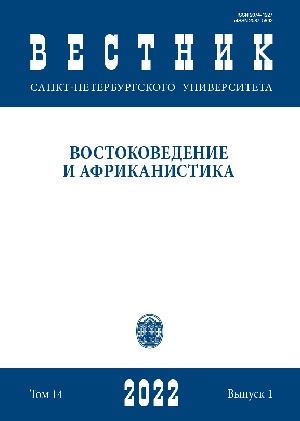Oirat Manuscripts in the Cabinet for Collecting, Cataloguing and Publishing Old Books of Ethnic Minorities in Ürümqi.Part 2
DOI:
https://doi.org/10.21638/spbu13.2022.105Abstract
The article presents a summary of the unpublished catalogue of Oirat manuscripts and xylographs preserved at the Cabinet for Collecting, Cataloguing, and Publishing Old Books of Ethnic Minorities, the National Affairs Committee of the Xinjiang Uyghur Autonomous Region (Ürümqi), compiled by the keeper of the collection Do. Galdan. The fund contains around 400 books collected among the Mongolian population of the Xinjiang Uyghur Autonomous Region since 1984. The Catalogue compiled by Do. Galdan is a list of 397 entries structured according to the order of shelfmarks: the items are neither classified by topic nor indexed, which does not allow the search for a particular text inside the collection. Therefore, classifying and grouping the items is the main task of this article. Its main focus is a thematic index to the upcoming catalogue. The index is preceded by commentary that introduces the classification of texts and notes the highlights of the collection. The texts were classified based on their titles and the descriptions of their content provided by Do. Galdan in his draft catalogue. The overall number of surviving Oirat manuscripts is limited, and the value of the materials preserved in Ürümqi is beyond dispute. What makes this collection exceptional is its local and popular character which reflects the tradition of text-related practices spread among the Oirat population of the Xinjiang Uyghur Autonomous Region in the 20th century.
Keywords:
Oirat literature, Clear Script, todo bičiq, Zaya paṇḍita, manuscript collection, ethnic minorities
Downloads
References
Downloads
Published
How to Cite
Issue
Section
License
Articles of "Vestnik of Saint Petersburg University. Asian and African Studies" are open access distributed under the terms of the License Agreement with Saint Petersburg State University, which permits to the authors unrestricted distribution and self-archiving free of charge.





